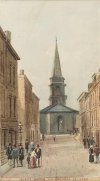Di.Poppitt
GONE BUT NOT FORGOTTEN
Re: Christchurch
Hi Wendy, what great photos but don't they make you feel sad especially the second one.
Love the horse with the bag, I so remember when a tradesman stopped for any length of time in the street, out came the bag and the horse didn't move an inch.
Hi Wendy, what great photos but don't they make you feel sad especially the second one.
Love the horse with the bag, I so remember when a tradesman stopped for any length of time in the street, out came the bag and the horse didn't move an inch.















